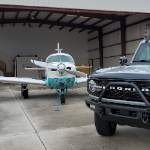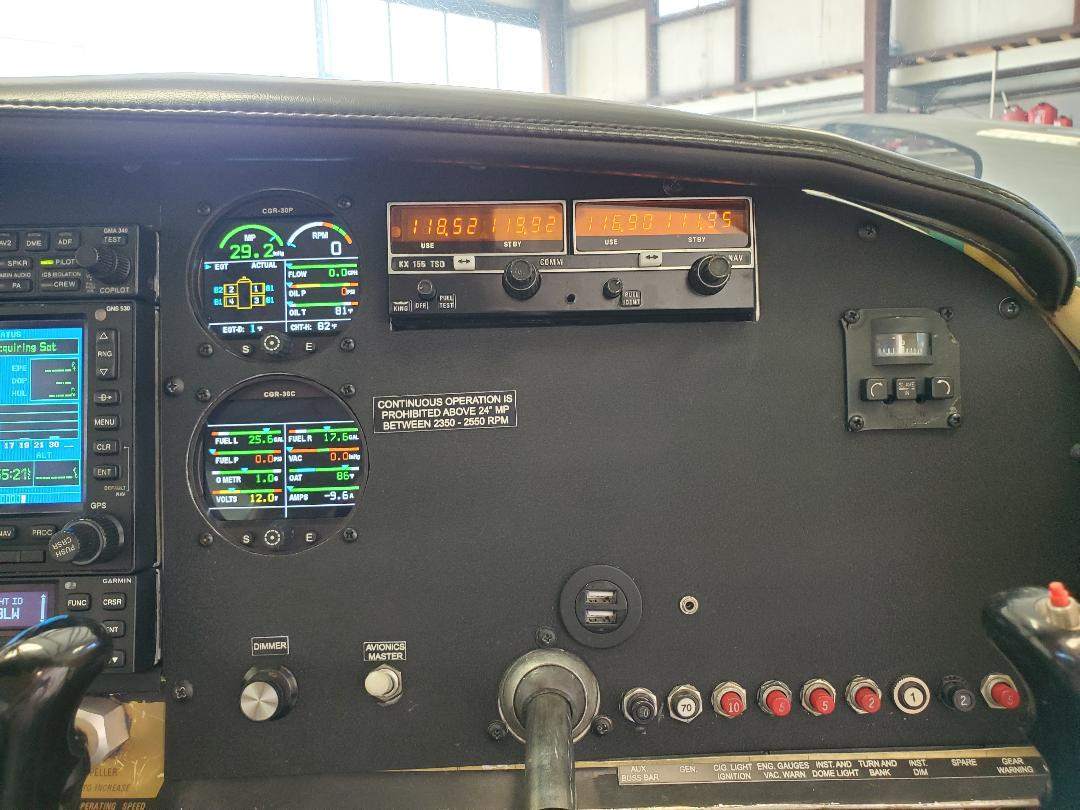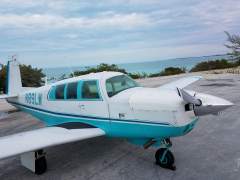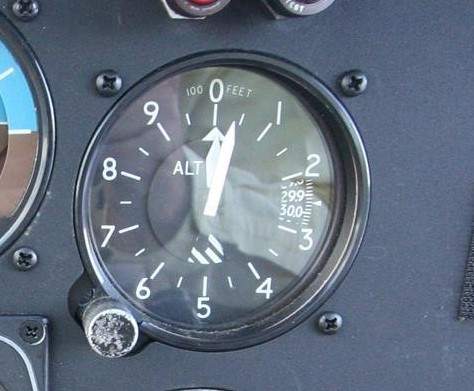-
Posts
55 -
Joined
-
Last visited
Content Type
Profiles
Forums
Blogs
Gallery
Downloads
Media Demo
Events
Everything posted by redcatcher27
-

Are there model years one should avoid?
redcatcher27 replied to Entropy's topic in Vintage Mooneys (pre-J models)
Avoid all models and years, with the outstanding exception of the 1968 M20F, in my humble opinion. -
OMGoodness! Your interior is incredibly nice. Where did you have it done?
-
-
I'm pretty sure that you can download it onto mooneyspace and then reference it in your post. I also use an excel spreadsheet where I track virtually everything with my plane, maintenance, ordered parts, expendables, and (sadly), costs. I will attempt to sanitize it and post it in the mooneyspace/downloads/STC section since there doesn't seem to be any other categories that fit.
-

FULL FLAPS, SPEED ON FINAL, & GO AROUNDS...
redcatcher27 replied to DCarlton's topic in General Mooney Talk
You should never feel hurried. Do what you feel most comfortable with. There are a lot of folks out there (including the FAA: Airplane Flying Handbook (FAA-H-8083-3B, Chapter 8, Page 8-3) that preach stabilized approaches (fully configured with no changes) whenever you are on final and inside the FAF. However, once you become comfortable in your aircraft, you might venture into slightly higher approach speeds, using "approach" flaps, and then choose to lower your flaps to the full flap setting only when you are landing assured on short final. Whatever methodology you take, you should never feel hurried. - that's step #1 of most mistakes. -
I asked. He doesn't do that.
-
My KX-155 nav/com, which acts as a backup to my Garmin 530, failed a few months ago (it wouldn't power-up). I delayed trying to get it fixed until my annual this past month. Unfortunately, my shop didn't have any great plans for being able to get it fixed in a reasonable time and cost. They were actually encouraging me to have a GNC255 installed to "match the rest of my panel". Technically, I'm not a CB, but I thought that was ridiculous. So, with the help on mooneyspace.com, I pursued other options. I happened upon kx-155.com, read the good reviews, and decided to try them. Now, I'm adding my own review: I just can't imagine a better option. It only took 11 days from the time I sent it off until the day I received it back, and that included a 48 hours long bench test. Along the way, Ed from kx-155.com, aka Soldan Electronics, keep me informed every step of the way. I received 3 detailed videos from Ed. The first showing that he had gotten my radio up and running by replacing the power supply. The second showed the unit on his bench test stand, and how mic gain, output power, frequency deviation, and an assortment of other adjustments needed to be made. The last video was also on the test stand with all the new components installed and all adjustments made. Total cost was $1499.00 The invoice read: "Fix Switching power supply, REPLACED FREQ TRANSFER SWITCHES, REPLACED PHOTOCELL IN DIMMING CIRCUITS, Lube all switches controls for smooth noise free operation, adjust Mic Gain, TX power, AGC Squelch, TX freq, VOR composite level.....install Overhauled Faceplate and new lenses...Detail and clean. Run 48 hours and Retest all again." The unit looks brand new and works like a charm. It came with a nice Allen tool along with instructions about how to properly reinstall it into the panel without damaging the unit. All along the way, Ed was adamant about me checking to make sure I have proper cooling to the avionics stack. That right there tells me he is more focused on customer service than on his own productivity. I couldn't be happier!
-
So, there are many great restaurants and local dives to choose from in Apalachicola. I keep a car parked there at KAAF, so I'm not 100% certain, but I believe the FBO there has a courtesy car. and Apalachicola is only about 4 miles away. The Owl Cafe is perhaps my favorite for a full dinner, but below that is "The Tap Room" and it has more of a bar room ambience. Both place's serve "Duck Fries", which are pulled duck confit fries with crispy prosciutto and duck cracklins. So good! The one place I think you probably must see is "Hole In the Wall". Go at an off time, when its not so crowded, or you'll never get a seat - the place is TINY. Sit at the bar and have some raw oysters. You won't be disappointed by the show put on by the three main characters/owners/operators there - Dwayne, Barbara, and Danny. Its their crazy, country, and continuous banter back and forth between them and their patrons that will leave you in stitches. Something between Seinfeld's soup nazi and a slap stick sideshow. Many other places in between, but they all serve great seafood. If you need a place to stay, and you're not a CB (I know, wrong website, right?) there's the historic Gibson Hotel. For a quick breakfast the next morning before you get back in the air, Cafe Con Leche. Enjoy!
-
Thanks so much for your response, Clarence. Funny, but that is precisely what was reported to me this morning from the repair facility doing my annual - they said they had replaced the castellated nut with one that incorporated a nylon insert, along with a stainless steel cotter pin (at no charge!) - they didn't give me part numbers, but I'm confident its the one you indicated. As you said, with the nyloc nut, along with a stainless steel cotter pin, you essentially end up with a double safety there. Given what happened to me - I would highly recommend that EVERYONE have this done at their next annual.
-
If you have the money lying around to buy a cirrus, you have enough to buy a really nice mooney.
-
1968 M20F The other day, I was reminded once again that when it comes to aviation, you always need to be ready for anything. My throttle cable became disconnected at the throttle arm. My wife and I had landed a few days prior at KAAF (a great place for raw oysters and seafood!). It had been a great IMC/IFR flight, and we flew almost down to the circling minimums before we broke out and circled, landed, taxied in, and shutdown. A few days later, we were to depart. But allow me to back up - like many of you, I suspect, I normally set about 1100 RPM just before I pull the mixture when shutting down. And generally use the Don Maxwell "How to start a Lycoming fuel injected engine" methodology for starting. And that's exactly what I had done. The approach and landing was fine. Taxing was fine. Setting 1100 RPM was fine. Normal shutdown. But two days later, as soon as I cranked up, I knew we had a problem. The throttle was completely unresponsive. I shut her down and asked Jim, Centric Aviation's mechanic to take a look. After removing the cowlings, he found that the linkage was disconnected at the throttle arm. Still on the arm, held by a thin layer of engine oil/residue, was the washer. The bolt was found nearby in the lower cowling. But both the cotter pin and the castellated nut were missing. Gone. Vanished. Jim got us fixed up and going in no time at all. By the way, all the people at Centric Aviation/KAAF are great, great folks. They treat us like royalty every time we go there. I'm so thankful/lucky/blessed that it didn't happen when we were airborne, and in the clouds. At WOT. Or worse yet, near idle, in the clouds, while slowing down to configure. Our planes back home now, at KFFC, and in its annual, and I'm having them look closely at that particular linkage for any signs of anything in the proximity that could cause a cotter pin to fall out. Of course, I've asked them to look closely at all my other linkages for condition and security. So now this is to you, gentle reader. What else can we, this awesome community of Mooney enthusiasts, learn from this incident? I'm all ears.
-

4 mile final and the Johnson Bar comes apart
redcatcher27 replied to Ned Gravel's topic in Vintage Mooneys (pre-J models)
Congratulations on a great outcome! And great to know information - that it can sucessfully be put back together in flight. Another option not listed, and possibly the best option, (considering safety concepts such as "error chain" and "stabilized approach") would be to ask for vectors to a holding position to sort out the problem. Continuing an approach with unresolved problems is a recipe for disaster, IMHO. But please, don't confuse my opinion for judgement - I'm only trying to add alternative ideas to the discussion. Again - congratulations and thanks for sharing! -

Show me your sexy hub caps!
redcatcher27 replied to Yourpilotincommand's topic in Vintage Mooneys (pre-J models)
I don't have a picture handy with them on, but I have the chrome ones from LASAR on my 1968 M20F. I love them! The line guys really love them too - I've lost count of the number of compliments I have gotten on them. I'm sure they love my tips too. -
From the album: 1968 M20F N89LW circa 2018
-
From the album: 1968 M20F N89LW circa 2018
-
From the album: 1968 M20F N89LW circa 2018
-

High oil temp when climbing
redcatcher27 replied to Htmlkid's topic in Vintage Mooneys (pre-J models)
+1 on cruise climb above 1k’agl... 120 IAS... In addition to better engine cooling, it also provides a lower deck angle, which gives better surveillance out front, to see and avoid. Good luck on solving your problems. -

Certified Altimeters?
redcatcher27 replied to redcatcher27's topic in Vintage Mooneys (pre-J models)
I'd rather not say here, but if you pm me, I'll be glad to tell you. -

Certified Altimeters?
redcatcher27 replied to redcatcher27's topic in Vintage Mooneys (pre-J models)
I think that manufacturers added the hashed lines to highlight that the aircraft is at a low altitude, in a way that's much easier and quicker for the pilot than 'parsing' multiple hands on the altimeter face. Different widths - the hashed area gets bigger as you get lower. -

Certified Altimeters?
redcatcher27 replied to redcatcher27's topic in Vintage Mooneys (pre-J models)
Great explaination! Thanks so much. -

Certified Altimeters?
redcatcher27 replied to redcatcher27's topic in Vintage Mooneys (pre-J models)
No, that's it! That's what they indicated to me - that I needed one with 20 foot tick marks! But perhaps there's an internal issue too? I don't know. -

Certified Altimeters?
redcatcher27 replied to redcatcher27's topic in Vintage Mooneys (pre-J models)
So, for clarity, the top one was the OLD one. T he bottom one, with the 20' tick marks is my NEW one. -
Welp. I guess you learn something new every day. I took my 1968 M20F in for an oil change, installation of a new (to me) vacuum step actuator, and 24 month IFR certification of the static, transponder, altimeter. Mind you, I had been flying for almost three years of ownership with the old altimeter... Aircraft logs showed that it had been IFR certified roughly every 2 years since it was installed in 2004. Came home with a new altimeter, after I was told my old one wasn't certified for IFR flight. They told me why they thought it wasn't, but do you know or can you guess? BTW, the old altimeter was p/n 5934P-A56 and the new one is p/n 5934A-1. Or maybe I just got bamboozled? Anyway, the cert along with the new altimeter cost me less than .5 AMU, so I suppose I am happy.










